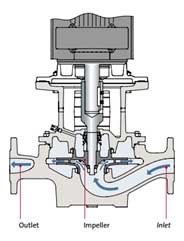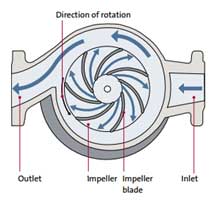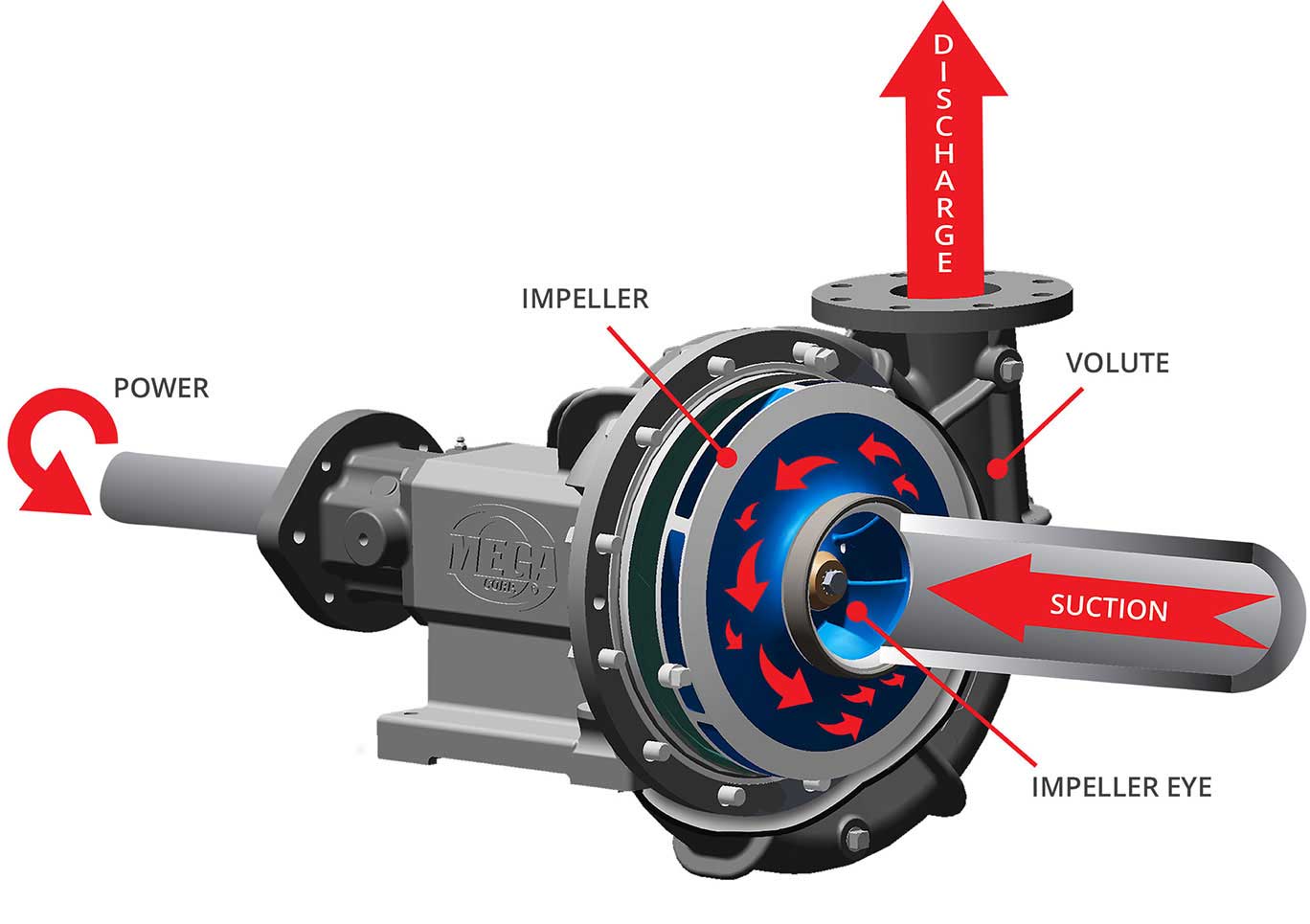Centrifugal pumps are the most commonly used pump in many industries. This type of pump is mainly used in agriculture, municipal water and wastewater plants, industrial, power, petroleum, mining and many other industries. Simply put, this pump uses centrifugal force, through its impeller, to transfer fluid from one location to another.
Characteristics
All centrifugal pumps include a shaft-driven impeller that rotates (usually at 1750 or 3500 RPM) inside a casing. Liquid flows into the suction port (inlet) of the casing and is thrown to the outside of the casing and then exits the discharge port. The velocity imparted to the liquid by the impeller is converted to pressure energy or “head”.


Centrifugal pumps impart momentum to the fluid by rotating impellers that are immersed in it. The momentum produces an increase in pressure or flow at the pump outlet.
In other words, a centrifugal pump converts driver energy to kinetic energy in a liquid by accelerating the fluid to the outer rim of an impeller. The amount of energy given to the liquid corresponds to the velocity at the edge or vane tip of the impeller. The faster the impeller revolves or the bigger the impeller, then the higher the velocity of the liquid at the vane tip and the greater the energy imparted to the liquid.



Leave A Comment